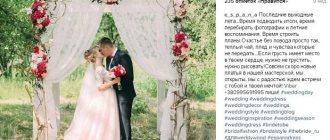According to one legend, during their expulsion from paradise, Adam and Eve were given two plants to make their earthly life easier. Rosemary was given as a gift to support the spirit, and mountain lavender was given as a gift to delight the soul.
Once you see the endless fields of this fragrant evergreen plant during the flowering period, you can easily believe in the legend, because aesthetic pleasure when admiring the flowers is guaranteed.
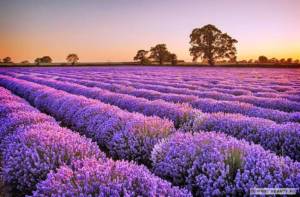
Colorful lilac and blue-violet inflorescences, swaying in the wind and impressing with the play of shades in the rays of the sun, present an unforgettable sight.
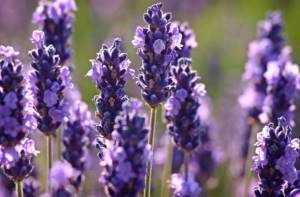
Popular types
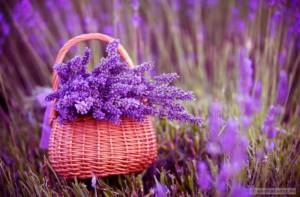
In most cases, blooming lavender is associated with endless violet and lilac expanses. But in reality, these beautiful flowers impress with a wider range of colors. Some species can bloom with colorful blue, snow-white and pale pink spikelet inflorescences.
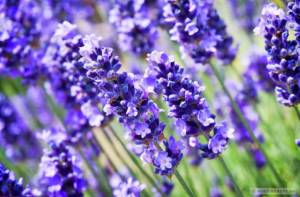
In total there are about 45 varieties of this fragrant evergreen subshrub. But in the garden at the dacha and on the windowsills in apartments, two main types are usually grown - English and French lavender and their hybrid varieties. The first variety is a garden variety, since it overwinters well in the soil, while the second is more capricious and is considered a heat-loving indoor plant.
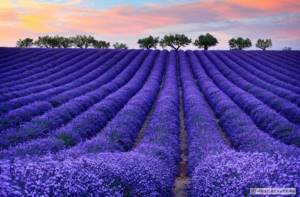
Lavender grows well on mountain slopes, which is why it is often called mountain lavender. The hit song of the 80s also gave popularity to this name. based on Shabrov's poems. But in nature there is no separate such variety.
Lavender angustifolia or English
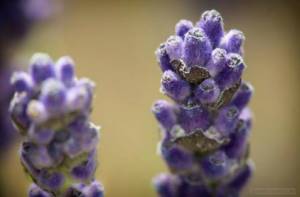
Because of its particular popularity, it is precisely this that is most often meant when talking about this plant. The shrub can grow with branches up to 1 m in width, reaching the same height of the stems.
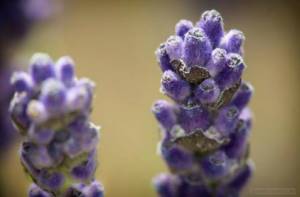
The exception is the dwarf subspecies, whose lavender bush is usually no higher than 30 cm.
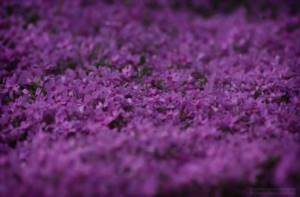
This species blooms in June-July with beautiful blue, lilac and light blue flowers. Many shoots are covered with a bluish edge, which adds attractiveness to the bushes. The species has a pleasant aroma, and it is from it that fragrant perfumes and skin care products based on lavender oil are created. Dried flowers, along with rose and jasmine petals, are added to herbal teas.
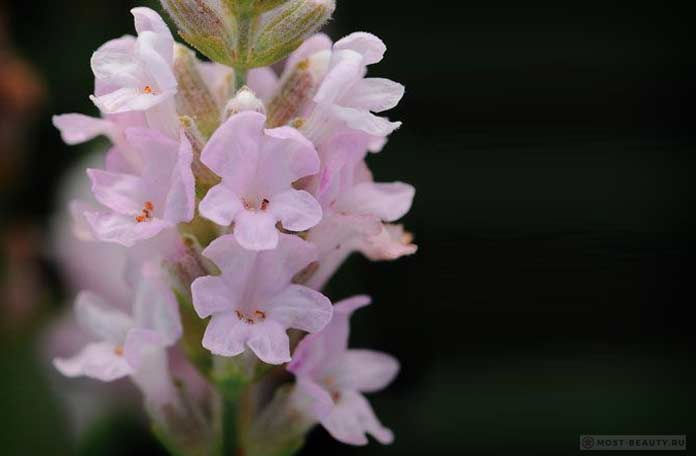
Elegance Pink is one of the varieties of this species, blooming with soft pink flowers. Its bushes can reach a height of up to 35 cm.
Broadleaf (medicinal) or French
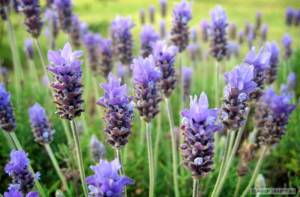
This most fragrant (but not always particularly refined and pleasant) species was grown in the vastness of France back in the Middle Ages, which gave it its name. On one stem of the plant, up to three inflorescences with large flowers grow, which delight with bright colors in the spring. It is from this species that the main decorative varieties of lavender come, which are distinguished by a wide range of colors (from standard purple to light pink and even burgundy).
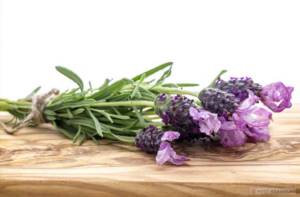
Bandera Pink blooms with beautiful purple inflorescences with pink tips. With its lilac hues, Bandera Purple Violet looks especially elegant in bouquets (both live and dried).
Hollandaise or lavandin
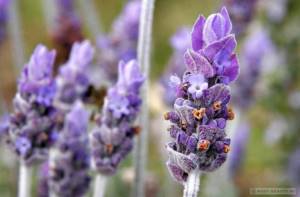
This variety is a hybrid of English and broadleaf lavender and is one of the heat-loving plants that are grown in the garden in the south or in a pot on the windowsill.
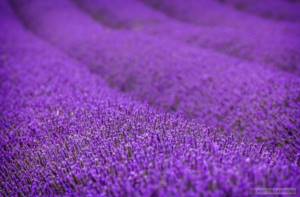
The height of the bushes can reach up to 2 m (the width is the same). This species is distinguished by curved inflorescences of purple and lilac shades that bloom in July.
Alba
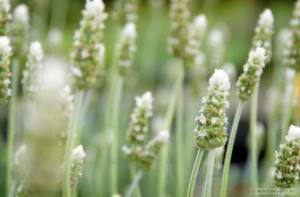
This variety of hybrid lavender is distinguished by atypical white flowers and silvery-green leaves with a small edge. A beautiful spreading subshrub with abundant shoots, fragrant flowers and leaves is widely used in landscape design.
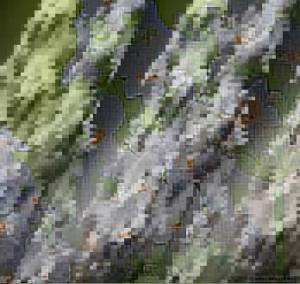
Also, this variety is often used in bouquets. Blooms in July-August. The dwarf variety is Nana Alba.
Most-beauty.ru already has an interesting article about the most beautiful bouquets; flower lovers will be delighted with this beauty!
Petiolate
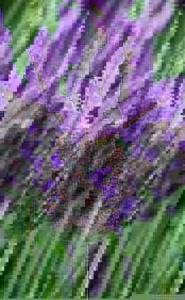
This ornamental species blooms in colorful purple and is found throughout Portugal, Morocco and Spain. In Russia, these beautiful flowers with gray edges are grown exclusively indoors.
Serrated
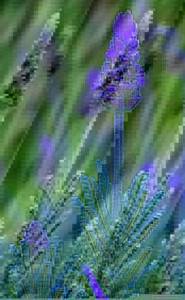
This capricious beauty is very thermophilic and in mid-latitudes it is grown exclusively indoors in pots. In the wild it is found in Crimea. Large flowers of lilac and violet shades and jagged leaves with a silvery tint give the plant a special attractiveness. A popular variety among gardeners is Royal Crown.
Collection process
To cut inflorescences, use only sharply sharpened scissors or pruners. After pruning, there should be no creases left on the stems. Cutting with blunt pruners has a negative impact on the health of the bushes. You should trim no more than a third of the entire stem. If you cut off more, the root system may die. And since the crop is a perennial, if you cut off the inflorescences incorrectly, you can lose the entire bush.
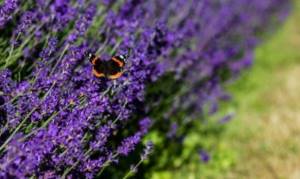
The older the bush, the more inflorescences it will have. And, accordingly, there will be much more harvest in the summer. In the first year of growing the plant, 1-2 bouquets are cut from the bush. After 2-3 years, the number of bouquets may exceed 10.
See also
Planting and caring for kobeya in open ground, growing from seeds and how to preserveRead
Use in landscape design
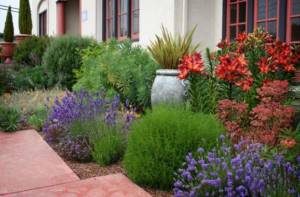
If you want your garden to not only please the eye, but also serve as a delight to the sense of smell, you should plant lavender next to the most fragrant plants. Sage and catnip, garden hydrangea and yarrow are recommended as “neighbors” for this fragrant shrub.
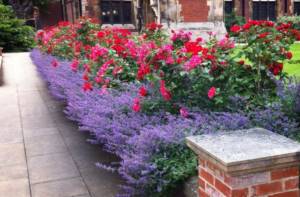
It is also good to plant these evergreen bushes next to roses and almost any plants with a contrasting yellow color. They look especially beautiful next to the yellow spherical flowers of “cotton lavender,” as the fragrant santolina is often called.
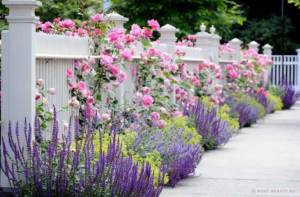
Dutch and French species are attractive not only during the flowering period. Their evergreen bushes with a silvery tint add a special charm to the garden even without flowers. Tall varieties are used in alpine slides, and the narrow-leaved variety is usually used to decorate borders. The most colorful effect can be achieved by planting lavender bushes of different colors in a checkerboard pattern.
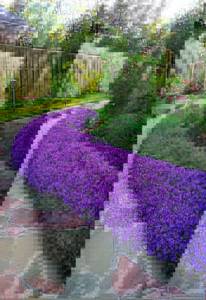
Original hedges are often created from different varieties of this fragrant plant. The broad-leaved variety looks beautiful next to standard roses. In the UK, original lavender carpets are created in gardens by pruning them to the appropriate height as the plants grow.
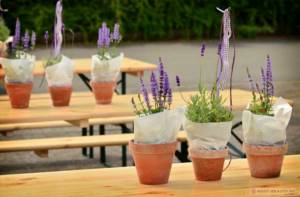
When to collect lavender?
Details Category: Lavender in the garden
Picking lavender is an incomparable pleasure, especially if you nurtured and grew it yourself. But when should we collect it, my dear? Firstly, the exact time to harvest lavender depends on the place where the lavender grows. For example, in the Alps, its flowering time is from mid-June to the end of July, but here lavender blooms from mid-June to mid-August. Secondly, when to harvest lavender depends on what you intend to do with your harvest. The fact is that each stage of lavender flowering has a different type of aroma - at first lighter, and in the full flowering phase more mature. It is customary for us to collect lavender during its mass flowering period, when 50% of the flowers bloom - at this time their color and aroma are most powerful. This period begins at the end of June - beginning of July. Some gardeners believe that it is best to collect lavender on Ivan Kupala Day; by the way, they say that all plants at this time reach the peak of their magical powers.
However, English lavender experts say that the aroma is most intense when ¾ of the flowers on the stem are open. Remember the basic rule - if lavender flowers are beautiful in the field, they will be beautiful when dried. It is very important to choose the right time of day to collect lavender. The best time follows several days of dry weather, when the morning is almost over and the dew has evaporated. Harvesting lavender flowers during dry weather will greatly reduce the drying process because there will be less water in the stems. Cooler air temperatures in the morning are more preferable for harvesting lavender, because during the hot afternoon, lavender begins to “dissipate” its precious oil. In addition, there will be more bees during the day; dialogue with them may not end in your favor.
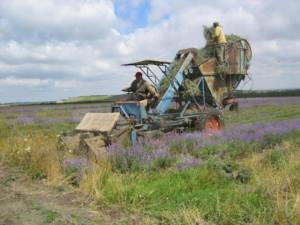
When collecting flowers for a dried flower bouquet, you need to check the lavender daily and collect it only at the initial flowering stage, when only one or two of the flowers have opened. This way your flowers won't fall off the stems when they dry completely. It is necessary to cut directly below the flowers, but never cut off more than a third of the entire plant, otherwise the lavender may die. To create bouquets in general, it is better to use lavandin, since the stems of lavandin are much longer and much thicker than those of real lavender. It is better to use pruning shears for collecting, but sharp scissors will also work.
By harvesting lavender to dry the buds, you can be less concerned about the flowering stage, almost all the flowers can be open. However, if you have white and pink lavender in your garden, do not dry it together with traditional “lavender”, this will ruin the overall appearance of the dried flowers, they will appear dirty. If you need to dry a small amount of lavender, you can arrange it in rows on newspaper in a dark, dry room. Storing flowers in sunlight will kill their unique color. If you need to dry a large amount, you need to hang bunches of lavender where there is a lot of air and not enough light (for example, a barn). It usually takes one to two weeks for lavender flowers to dry completely, given our hot summer days in recent years. Be sure to keep dried lavender away from direct sunlight to preserve its beautiful color and rare aroma.
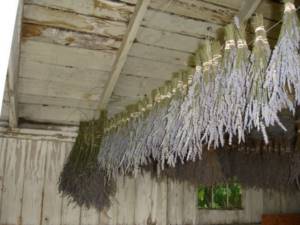
If you are planning to obtain essential oil from lavender using steam distillation (of course, you remember that to obtain 1 kg you need up to 100 kg of raw materials), then you can use inflorescences in the phase from the beginning of flowering to the end of flowering as raw materials. However, lavender at the end of its flowering stage produces oil of good quality, but during storage it quickly acquires an unpleasant odor. The aroma of oil obtained from normal raw materials, at the beginning of flowering, even improves during storage. If you store collected lavender for a day, for example, in a barn, and then dry it, the oil content in the flowers does not decrease at all, and the essential oil has a more pleasant aroma without an undesirable herbaceous note. But the process of steam distillation is generally a topic for a completely separate conversation. Oh, by the way, I completely forgot! For culinary use, harvesting lavender requires special attention. Here I can only quote William Vasilyevich Pokhlebkin, our domestic researcher and popularizer of cooking, the author of numerous works on gastronomic history: - Lavender flowers, collected in June, at the very beginning of flowering (until full opening) and dried in the shade, in the wind, are used as a spice , or in a light spirit from a heated stove. Especially prized are the bright blue lavender flowers, which should retain their color unchanged even after drying. Lavender has a strong, distinct aroma, which is why it is traditionally used almost exclusively to flavor soft drinks and vinegar. But lavender can be recommended for use in salads, cold appetizers, vegetable, mushroom and fish soups, and even roasts; At the same time, the lavender is ground into powder and sprinkled like pepper on the indicated dishes.
krymlavanda.ru
Lavender fields of Provence
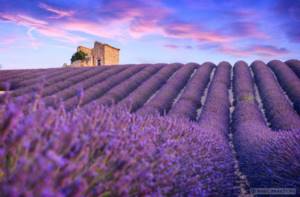
It is impossible to imagine the south of France without its vast lavender fields, mesmerizing in their beauty, where the eye can drown in a variety of shades - from blue-violet to lilac. Shimmering in the sun with their bright colors, for which they are also called “blue gold”, these flower meadows look truly fantastic. Beautiful snow-white houses against the backdrop of these fields create a feeling of idyll.
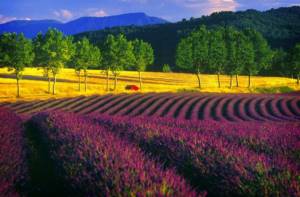
You can admire the colorful blooms of lavender fields in France from the end of June until the end of summer, but the best time is in July. The most attractive places are Drôme-Provençal and the Rhone Valley. In some places, lavender fields alternate with wheat or sunflower fields, which gives them a special charm against the backdrop of such contrasts. Near the ancient abbey of Notre-Dame de Senanc you can also see colorful fields of these beautiful plants.
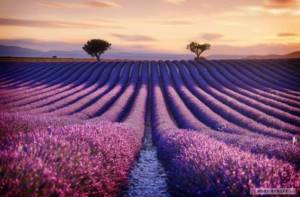
Excursions to lavender fields are a popular attraction for tourists in French Provence. Without this floral beauty, the south of France would lose its unique charm.
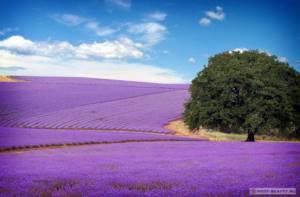
Lavender fields are still found in many regions of England (they have been grown in Surrey since the 17th century), as well as in the mountains of California and the vast expanses of Oregon in the USA.
Lilac fields of “Crimean Provence”
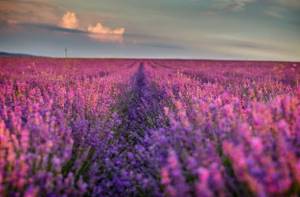
Colorful lavender fields are also considered a symbol of the Crimean peninsula. Narrow-leaved varieties grow here, which were planted in the 30s. 20th century. Initially, this plant was brought from the Mediterranean coast for the Nikitsky Botanical Garden, and subsequently spread widely throughout the Crimea.
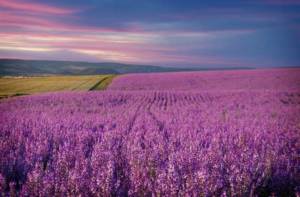
Near the village of Turgenevka there is the largest lavender field. This area is called “Crimean Provence”, and they even hold their own lavender festival there.
Beautiful fields of these plants can be seen near the village with the eloquent name Lavender. In the Belogorsk region, you can admire such beautiful floral landscapes near villages with no less “telling” names - Tsvetochnoe and Aromatic.
Near the village of Olenevka near Tarkhankut there is a small but very beautiful plantation of these flowers. It is advisable to capture their bright colors in June-July, as they fade later.
At the wedding
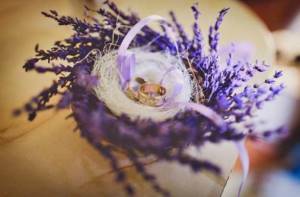
Lavender is considered a symbol of love, purity and nobility, beauty and sophistication. According to many beliefs, this plant helps lovers to love each other passionately and tenderly, and brings happiness. Therefore, it is not surprising that its dried fragrant petals have long been showered on newlyweds at weddings. Taking into account the special symbolism and versatility of the color scheme, this plant is relevant both in modern wedding decor and in the bride’s bouquet.
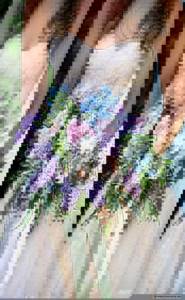
Lavender is most appropriate when decorating a wedding in a French style, with a Provence or rustic atmosphere. A small bouquet will look decent in the groom’s boutonniere, and a small bouquet of lavender alone, decorated with lace, will also be suitable for the bride. Dry compositions can also be used. In this case, you can even decorate invitations and cards for placing guests with lavender sprigs.
Features of Provence style
Provence is a historical region located in the southeastern part of France, which gives its name to a considerable number of products and customs. This small area has become famous for the sunflowers, lavender, grapes grown there, as well as the production of essential oils, honey and everyone’s favorite Provençal spices. Provence style is a combination of sophistication and simplicity. This feature has allowed it to gain wide popularity in many countries around the world.
The bride's bouquet in Provencal style has a simple shape. It should look as if the plants that make it up were just picked from the field.
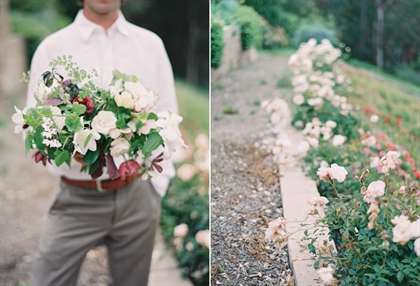
Such a composition should be designed in calm, soft colors. When creating it, you can use pastel shades: lavender, sky blue, light beige, olive. To create a Provencal atmosphere, you can replace the satin ribbon with twine.
Editor's choice: Wedding film or wedding video - what format should the video of a memorable event have?
Beautiful bouquets
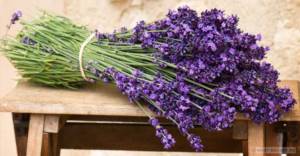
Delicate and romantic lavender is a universal flower that will be appropriate in a wedding bouquet for any design. It can be combined with garden roses, clematis and spikelets. It is also permissible to add freesias, peonies, orchids and carnations. The main thing is not to make unnecessarily bulky compositions.
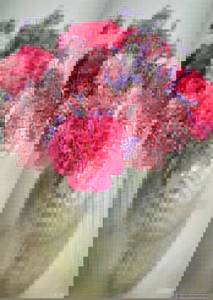
Mono-bouquets of purple tones will look advantageous, emphasizing spiritual beauty. A bouquet of lavender combined with peonies will be more feminine. Such compositions look lush and luxurious, while maintaining a feeling of tenderness. The most exotic and sophisticated bouquets will be lavender in combination with white roses and orchids, which are simply ideal in terms of the harmonious combination of colors.
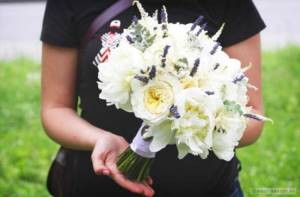
For a vintage style wedding, you can decorate a lavender bouquet with a composition of pearls. In any case, these flowers are the best choice for romantic natures.
How to choose a bouquet of lavender?
Lavender is definitely pretty. But ordinary cut bushes are not suitable for a wedding; you need to choose a finished composition that will have an interesting design and style.
In order for your bouquet to turn out natural and harmonious, you need to build on the following selection criteria:
- Carefully secure all the branches into one bouquet. To do this you will need to tie them tightly. This is quite an important point, because if the movement is incorrect and awkward, the composition can simply fall apart and all the flowers scatter.
- Lavender does not have large buds or large stems. Therefore, the composition with it looks modest and sophisticated. Often young ladies, in order to make the bouquet more bulky, add an increasing number of branches. This should not be done, since such an option will only spoil the uniqueness of lavender as a flower.
- Be sure to make both the bouquet and boutonniere for the groom in the same style. Such a combination will look harmonious, making you a single married couple.
- The shape of the composition depends entirely on the girl’s height. If the young lady is short, then a hemisphere will suit her. But if the girl is slim and tall, then she needs to emphasize this fact by choosing the classic version of the cascade shape.
Application in the interior
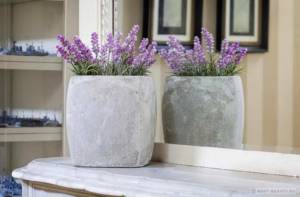
This plant is often used in the decoration of ordinary rooms. Beautiful bouquets of lavender in the home promote relaxation and relieve stress, and when placed in the bathroom, they help eliminate unpleasant odors.
Compositions in wicker baskets made from dried lavender twigs and inflorescences look original in the living room interior. Indoor varieties placed on the balcony in vintage buckets instead of hanging pots will also become a stylish decoration.
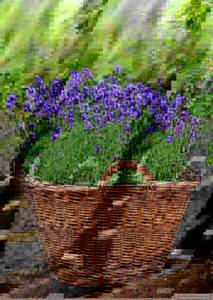
Candles decorated with dried twigs and lavender flowers will look great in the interior.
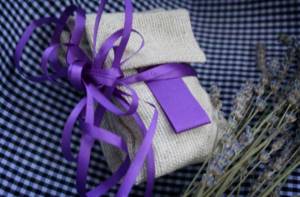
Heart-shaped sachets filled with dried petals of these flowers will become not only fragrant, but also stylish decor in your home. These pads can also be used in cabinets to repel moths. It is also believed that such sachets, placed at the head of the head, help get rid of insomnia.
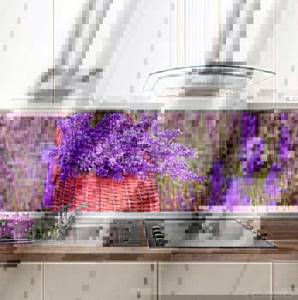
In addition, photographic images of flowers can be used in interior elements, such as, for example, a kitchen apron or photo wallpaper.
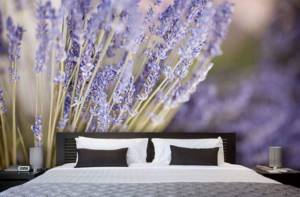
Drying technology at home to prevent flowers from falling off
Before drying lavender for bouquets, you need to remove all the leaves from the stems. We just remove it by hand. You need “naked” sticks. Next, we align the branches in length and cut off the excess. The average size is from 25 to 30 cm.
For tea and culinary purposes, only flowers can be dried. Leave the tops along with the stem or carefully pick off the buds. Sometimes the bunches are dried and then the flowers are removed. Once the moisture is removed, they leave the stem more easily. It is enough to pass your hand over a sheet of paper several times.
How to dry outdoors correctly
There are many different ways. We will tell you how to properly dry lavender so that it does not fall off. I want to maintain an attractive appearance, shape, and natural color. We offer two methods - drying them in bunches and individual branches.
Step-by-step instruction:
- We collect bunches no thicker than 5 cm in diameter. It is better to dry several branches at a time, then make bouquets of the desired size.
- We tie it with thread and ribbon. It’s better to make a loop right away; it will be easier to tighten it as it dries.
- Hang in a dry, ventilated place. To prevent the lavender from falling off, protect it from sunlight. Sheds and sheds are suitable. In the apartment, choose a balcony on the shady side. An attic will do in the house.
- Let's start drying. Medium sized bunches will require 7-10 days.
Scattered branches are dried in a similar way. Lay out on a flat surface. It is advisable to lay down paper, disposable towels, and cotton fabric. The difference is that you have to turn it over sometimes. The time will be reduced to 5-7 days. It is also customary to dry individual flowers and buds horizontally on paper.
It is convenient to use rubber bands and elastic threads for tying bundles. As they dry, you won’t have to re-form the bouquets again.
How to dry using an oven
Housewives are interested in how to dry lavender in the oven. This is not the best method for decorative branches. It is better to harvest in air, use an electric dryer. But in the oven you can prepare culinary raw materials. As a rule, only inflorescences are used. It is important that the temperature does not rise above 40 degrees. You can dry fruits and berries, blackberries, raspberries, and many vegetables in the oven.
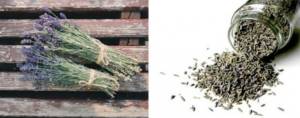
Harvesting and drying lavender
Step-by-step instructions for drying lavender:
- Cover a baking sheet with paper and spread out the prepared lavender.
- Turn on minimal heating, convection.
- Dry with the door ajar for an hour.
- Next, turn off the heat and leave for another hour.
- Turn on the oven again and continue drying.
How to determine the readiness of lavender? A simple way is to touch the inflorescences. They begin to fall off the stems. Or take a few pieces and rub them in your palms. The finished raw material will crumble. It is necessary to check after complete cooling.
Can it be dried in the microwave?
Finally, we’ll tell you how to dry fragrant lavender at home using a microwave. Not the most attractive method. Most often used for preparing herbs for tea. Only inflorescences are used. It is better to dry herbs, nettles, and various vegetables and fruits in the microwave.
Step-by-step instruction:
- Take a flat plate and cover it with a napkin.
- Spread the lavender in a thin layer.
- Cover with a second napkin.
- Turn on the heat for 3 minutes. Let's start drying.
- After the signal we take it out. We lift the napkin. Stir and cool. Leave the microwave open and let it ventilate for 10-15 minutes.
- We put it again. Cover with a napkin again. We continue to dry, only for 20-30 seconds. We check regularly.
An oven or microwave is often used to bring raw materials to readiness if the weather suddenly turns bad. Sometimes damp dried lavender is heated.


